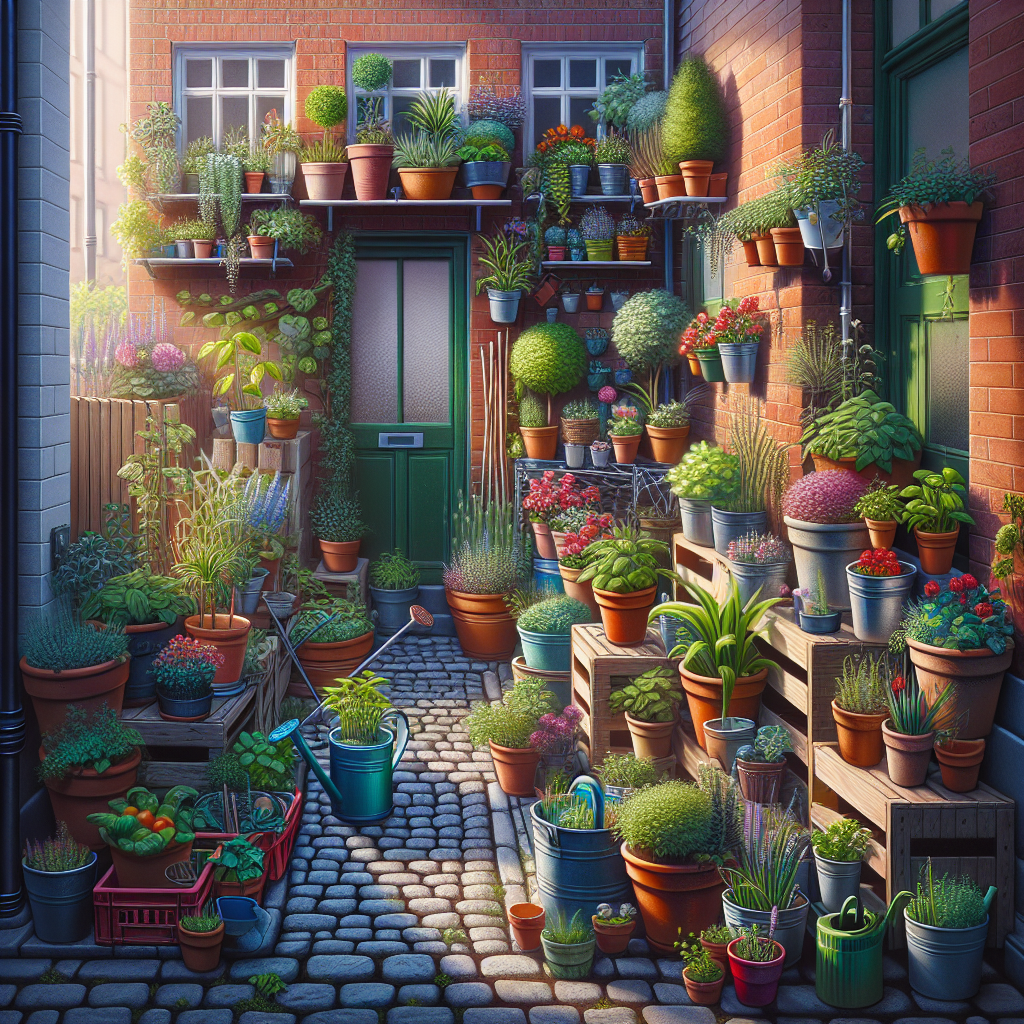Thriving in Tiny Spaces: The Art of Container Gardening
In an increasingly urbanized world where space is scarce, traditional gardening can seem like a distant dream for many. However, the art of container gardening has emerged as a popular and practical solution for those yearning to cultivate their green thumb in confined spaces. From high-rise Balconies and small Patios to modest Kitchen Windowsills, container gardening offers a versatile and rewarding way to grow plants, whether for aesthetic pleasure or culinary delight. This article explores the essentials of container gardening and provides practical tips to help you create your own Miniature Oasis.
Understanding Container Gardening
What is Container Gardening?
Container gardening involves growing plants in pots, buckets, tubs, or other containers rather than planting them directly into the ground. This method not only makes it possible for urban dwellers to enjoy gardening but also allows for better control over soil quality, moisture levels, and plant placement.
Benefits of Container Gardening
- Space Efficiency: Ideal for Small Spaces such as apartments or homes with limited outdoor areas.
- Portability: Containers can be moved around to take advantage of sunlight or protect plants from harsh weather conditions.
- Flexibility: Suitable for a wide range of plants including flowers, vegetables, herbs, and even small trees.
- Pest Control: Elevated containers reduce the risk of pests that are common in ground soil.
- Customization: Allows creative freedom in arrangement and design.
Getting Started with Container Gardening
Choosing the Right Containers
When selecting containers for your garden, consider the following factors:
-
Size: Ensure that the container is large enough to accommodate the root system of your plant. As a general rule, larger containers retain moisture longer and require less frequent watering.
-
Material: Containers can be made from various materials such as plastic, clay, ceramic, metal, or wood. Each material has its advantages; for instance:
- Plastic is lightweight and retains moisture well.
- Clay (terra cotta) offers good airflow but dries out more quickly.
- Ceramic pots are visually appealing but usually heavier.
- Metal containers heat up quickly in direct sunlight but are durable.
- Wooden planters are aesthetically pleasing but may rot if not properly treated.
-
Drainage: Proper Drainage is crucial to prevent waterlogging which can cause root rot. Ensure your container has drainage holes at the bottom.
Soil Selection
The quality of soil used in container gardening is vital since it directly affects plant health and growth. Ordinary garden soil is typically too dense for containers; instead:
- Use a light Potting Mix designed specifically for containers.
- Consider adding Perlite or Vermiculite to improve aeration and drainage.
- Incorporate Organic Matter such as compost to enhance nutrient content.
Choosing Plants
When it comes to selecting plants for your container garden:
- Opt for dwarf or compact varieties that thrive in confined spaces.
- Consider the specific growing conditions each plant requires (light levels, temperature range).
- Mix plants with similar needs together in larger containers.
Some popular choices include:
- Vegetables & Fruits: Tomatoes (cherry varieties), lettuce, peppers, radishes, strawberries.
- Herbs: Basil, mint, parsley, thyme, cilantro، chives, oregano، rosemary، sage، dill
- Flowers: Petunias , marigolds , geraniums ، begonias ، pansies
- Succulents & Cacti: Perfect low-maintenance options needing minimal water.
Caring for Your Container Garden
Watering
Proper watering practices are key:
- Containers tend to dry out faster than ground gardens due early how exposed they Foucault .
be sure reguloary check moist levers Do’t overwater let avoid root run
Complete soakings occasionally benefit deeper rooting nutrients uptake .
Fertilizing
Regularly feeding nourishment essential needed nutrient depletion pot Soil makes critical Apply slow-release granular fertilizers organic liquid options every four six weeks grow season most Plants feeding schedule specific instructions labels Follow ensure optimal Health Growth .
Arranging Layout
compact creative maximize available space select varying heights colors add visual interest . Plan layers taller center trailing edges balance appeal group complementary colors together harmonize look experiment different combinations until find pleasing setup .
Troubleshooting Common Issues
Common problems encountered troubleshooting solutions:
1.wilting insufficient watering excessive transplant shock relocate shadier area
2.*yellow leaves lack certain remedy supplement high nitrogen avoid compacted preventing drainage
debugging insect infestations clear thoroughly inspect remove damaged encourage beneficial natural predators ladybugs neem spray oil cured diseases prevent overcrowding ensure airflow sterile equipment cutting propagation .
Seasonal Care
adjust approach according seasons anticipate Winter frosts consider bringing indoors cold-sensitive wrapping insulation mulch Fall transitioning dormancy mode reduce gradually watering fertilization prepare Spring revitalization increase monitor weather forecasts suddenly freeze-burn harsh sunburn
Conclusion
embarking journey hobby brings joy relaxation satisfaction creating sustainable mini ecosystem food cultivation floral splendor opportunity reconnect Mother Nature midst busy lives inspires passion long term pursuit patience rewards invaluable appreciation beauty resilience environment stewarded responsibly embrace possibilities Encourages creative living desire caring world around us Thriving tiny Art opens endless opportunities anyone anywhere regardless smaller larger dwelling enriching lives fulfilling greener planet generations come.













